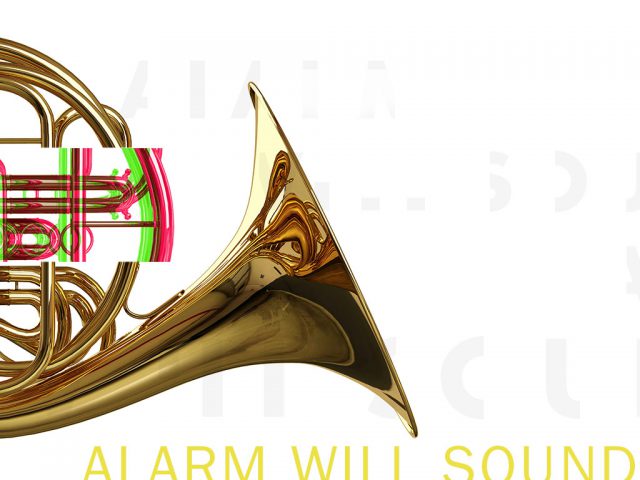
Last year, on my way out the door to JFK and a gig in Dublin, I thumbed through the D section of my bookcase of scores looking for my score to Donnacha Dennehy’s Grá agus Bás. But it wasn’t there. I tore apart the whole bookcase thinking it might have been misfiled or gotten wedged in somewhere, but to no avail. The score was gone and along with it years of precious and irreplaceable markings: rehearsal decisions and changes, things Donnacha had said about the music, notes on the text and its sources. Records from years of work with the composer and the ensemble were now gone. This was stuff that couldn’t be replaced easily if at all.
That episode got me thinking about the advantages of dealing with scores digitally: marking and conducting off of a tablet, with scores and markings safely backed up in the cloud. I’d already been moving my CDs, books, and pictures to digital and the cloud and had found lots of benefits; doing the same with my scores seemed like it could make my conducting life better in lots of ways:
Access. Any version of any score in my library could be available on any device at any time. I spent over a third of last year on the road, so that’s a big plus.
Safety. All of my scores and their markings could be safely stored in the cloud (with local backups too).
Flexibility. What I need to look at in a score changes from one gig to another and over the years I may spend with a piece. Marking up a physical score is a fairly permanent act, but digital markings can easily be erased and redone and can exist in infinite different versions. And what happens when a score is revised? While a hard-copy score has to be marked again from scratch, PDF annotations can easily be copied from one version to another.
Collaboration. It’s frequently helpful for players to see how I mark up my scores, and there are sometimes things I need to do in marking up a score that are algorithmic enough that I could outsource them to an assistant. All of this would be difficult with hard copy scores but is easily done with digital ones.
Simplicity and minimalism. No more hassles with printing and binding; no more shelves and piles of scores gathering dust and getting ragged with time.
So I began to look seriously at conducting off a tablet. Of course, many musicians perform off tablets, but conducting brings particular challenges for both hardware and software. The main hardware challenge is size: the iPads and Android tablets that I see musicians performing off of are too small for me to conduct full scores from. The main software challenge is page-turning reliability and speed: most PDF reading apps I tested on most devices were either too slow or not reliable enough in responding to page turns. Scores generally involve much more frequent page turns than players’ parts, and without bars of rest. The software has to be able to keep up: even a brief lag in page turning could be disastrous. (In an early trial of conducting off of a tablet, the software I used lagged a full six bars behind in turning pages in a performance of Nancarrow’s ferocious Study 3A; it was terrifying.)
I spent a long time searching for a setup that would meet all of these needs with as few missteps along the way: backstage with Crash Ensemble players just before walking on stage, I was demonstrating to a player how you adjust the screen brightness on a device I was trying and accidentally turned the screen completely off and couldn’t turn it back on. Someone had to throw a paper score at me as we walked on stage. But I finally found a setup that works really well:
HARDWARE:
Sony Vaio Flip 15. This is my laptop, but it’s perfect for marking scores: the screen can fold back on the keyboard, turning the laptop into a (thick) tablet, and you can write on the screen with a stylus, which is infinitely better for marking up scores than a finger. The 15″ screen is a little small for actually conducting off of, but it’s fantastic for marking scores. I also keep it close on hand for performances in case something goes wrong with the larger-screened device I principally use for conducting…
Dell XPS 18. This is my “conducting tablet,” the device I actually conduct off of. It’s got a big 18.4″ screen which is a great size for scores, though still small enough to (barely) slide into my backpack. Without stylus support, it’s not as good for marking as the laptop, but I can make markings with a finger in rehearsals and then clean them up later on another device if I want to. I’ve been careful to keep the conducting tablet free from any software besides the app I use for conducting: I want to minimize the chances of anything unexpected happening in performance.
Nexus 7. It’s often useful to be able to look at scores on a small device that I can keep in a pocket and pull out anywhere. The Nexus 7 is perfect for that. With a 7 inch screen and no stylus, it’s not great for marking and would be terrible to conduct off of, but it’s ideal for light score study on the subway or a plane. It’s like those old “pocket scores” from days of yore.
SOFTWARE:
Drawboard PDF. This is the app I use for marking and conducting scores. It’s got the best annotation tools I’ve found in the Windows Store, and works wonderfully with the pen. It’s also got super smooth, reliable page turning, which is critical for performance. Drawboard is developing and improving at an extraordinary pace, and its staff has been amazingly responsive in dealing with bugs I’ve caught and features I’ve suggested. I’m very grateful to them.
Google Drive (along with FolderSync on Android). This is what keeps all of the scores in sync between all of my devices. I’ve a “current repertoire” folder which is automatically synced via Google Drive between all my devices. It’s lovely to be able to mark a score on, say, my Nexus 7 and have the markings automatically show up on the conducting tablet when next I turn it on.
…
I’ve been using this setup for a few months now and really loving it. I’m gradually replacing all of my physical scores with PDFs, which is also making my apartment neater and less dusty; and it’s great to have more and more music available on these devices. I’m particularly appreciating the experience of content divorced from form: in the old days, having a big score of a piece for the podium and a small one for the pocket meant buying two scores (which would never have the same markings); with this setup, I can work with the same PDF (with the same markings) out on any device of any size.
There are still issues, though. The biggest frustration is publishers: most are very reluctant to share PDFs of scores. Of course, one can always scan scores and make PDFs that way, but the software-generated vector PDFs that publishers have of any recent scores are higher quality files that are smaller and take less processing power. But few publishers are comfortable sharing them. I hope that this will gradually change as the demand for digital versions of music increases.
And while conducting off tablet is safer in many ways, it’s almost certainly more prone to catastrophe on any particular gig than working off of paper scores: a PC crash is probably more likely than music falling off a stand or out of a binder and harder to recover from.
But the plusses seem to far outweigh the minuses. Last week, I realized that I’d forgotten to download a score that I was about to conduct a rehearsal of. But it just took a few taps in to have the score downloaded and ready to conduct with all of my markings. That was a whole lot easier and a whole lot less stress than what I had to deal with with Donnacha’s lost score next year. I’m hoping that will be the last marked score that I ever lose.



